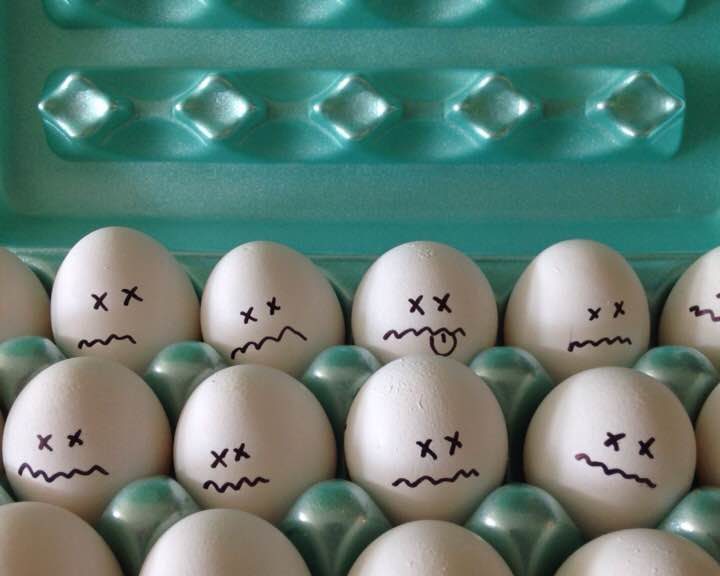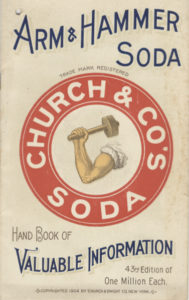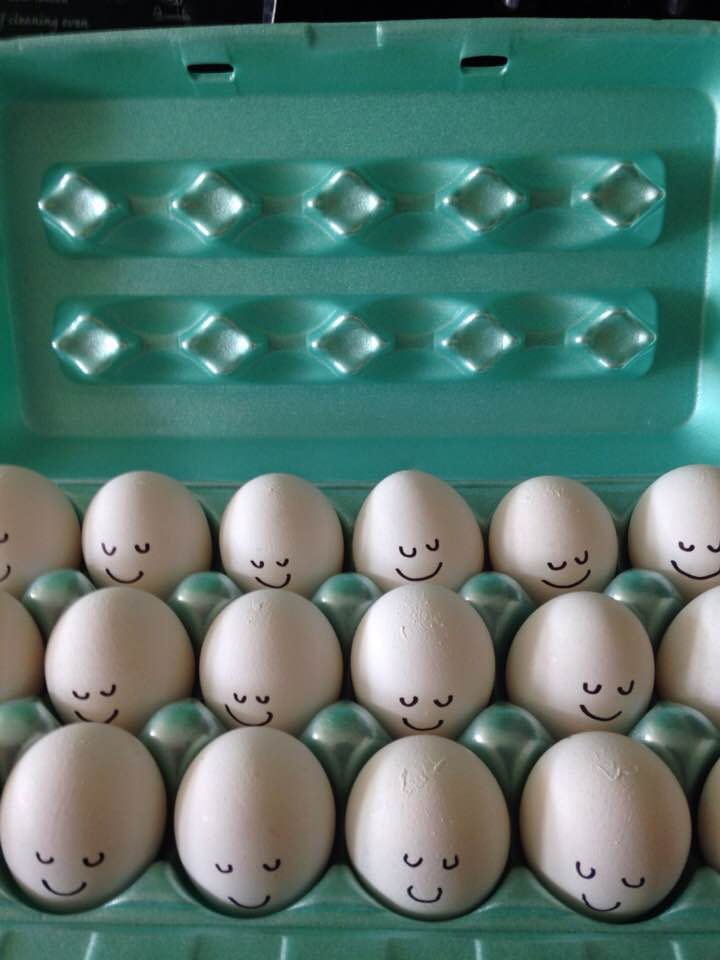
The Food Science of Hard-Boiled Eggs – Part III
There are way too many variations out there on how to cook and peel a hard-boiled egg. Many of them are just plain bunk. The truth is that there are several different paths to cooking the perfect hard-boiled egg. Our goal here is to show you the science behind boiling an egg because if you understand the science, you will then know what to do to achieve that perfect egg and peel it too!
In PART I, we looked at the physical chemistry of boiling water and why adding salt into your egg water is a waste of time and salt. In PART II, we looked at the structure and basic biochemistry of eggs. Today we will finish up explaining egg biochemistry and apply everything we’ve discussed to the cooking and peeling of that perfect hard-boiled egg.
EGG ACIDITY
We touched on the topic of egg acidity very briefly last week. Let’s go back now and look at it in a little more detail. The acidity inside the egg affects how it cooks and peels, so understanding this will help you cook that perfect hard boiled egg.
The Air Cell and Carbon Dioxide
- The air cell forms between the inner and outer membranes when an egg cools down after it’s laid.
- Carbon dioxide and a little bit of water vapor are the first gasses to fill the air cell.
- Over time, the air cell gasses leave the egg and are replaced by air from the atmosphere.
- As the egg ages, carbon dioxide continues to diffuse out of the egg white, through the shell and into the atmosphere.
Carbon Dioxide and the Acidity of Egg White
- The egg white is a mix of water and albumin. To be frank, there’s more water than albumin.
- There is carbon dioxide in solution in the water of the egg white in the form of carbonic acid.
- The initial pH of the egg white is about 7.6, which is only a little bit alkaline.
- As the carbon dioxide leaves the egg white, the carbonic acid content drops and the pH shifts to more alkaline values.
- After a few days, the pH of the egg can shift from the near neutral 7.6 to a solid alkaline value of 10.
- When the pH of an egg is ~8.7 or higher, the egg white no longer wants to cling to the inner surface of the inner membrane after cooking it. If the egg white is still fresh enough to have a lower pH, it will bind to the inner membrane during cooking stronger than it will bind to itsef.

Why Older Eggs are Easier to Peel
There are two things that make an older egg easier to peel than a really fresh one:
- The formation of the air cell and the separation of the shell membranes by air cell water vapor.
- Forming an air cell separates the membrane next to the shell from the membrane next to the egg white.
- A freshly laid egg has a temperature of approximately 105ºF (41ºC). The temperature inside most kitchen refrigerators is 40ºF (4.4ºC), a difference of 65ºF (36.6ºC). A nice big air cell helps the separation of the membranes. To make a big air cell, you need to cool a fresh egg from laying temperature to fridge temperature.
- Keeping an egg cool helps to preserve its air cell.
- Cooling the egg condenses the water vapor in the air cell, which can then get between the membranes and help separate them further. The more time that you allow for the water to move between the membranes, the farther it will penetrate and the more the membranes will separate.
- The shift in pH of the egg white to alkaline values
- Waiting a few days for the egg white pH to shift above 8.7 will help the egg white to let go of the inner membrane after cooking.
So letting a fresh egg age before you boil allows the air cell and its condensed water to work the two membranes apart. Since the outer membrane wants to stick to the shell after boiling, this makes it easier to peel the shell and outer membrane away from the inner membrane. Letting the egg white sit so it can become more alkaline helps to get the inner membrane off while peeling. Really fresh eggs do not have a favorable biochemistry for easy peeling
If You Must Boil a Very Fresh Egg
Here’s advice from the famous food scientist Harold McGee: if you absolutely have to boil an egg less than a few days from the coop, there are two things you can try to improve its ease of peeling:
- Add baking soda to the boiling water. This will make the water more alkaline. Some of that water will get inside the shell and shift the pH near the membranes to more alkaline values, thus helping to unstick the inner membrane from the egg white. It’s not a perfect fix since there’s really not enough time for the alkaline water to permeate the shell completely.

- Boil the egg longer to give the egg white time to really set. This has a big downside since it increases the likelihood that the egg white will be rubbery rather than tender. It also makes it more likely that the sulfur in the egg proteins will react with the iron in the egg yolk. The iron-sulfur reaction will give the finished hard-boiled egg a greenish discoloration to the yolk and a sulfurous smell. We’re actually getting ahead of ourselves mentioning these two things, which means it’s really time to introduce our most important topic…
WHAT HAPPENS WHEN YOU BOIL AN EGG?
When you cook an egg, what you are really doing is denaturing proteins. That’s a short statement that’s packed full of meaning. We need to explain the structure of proteins to understand it and why it matters for boiling eggs.
The Mysteries of Proteins
A protein is a polymer, which is that same thing as saying its a molecule that made up of repeating units. The repeating units are somewhat special since they are strands of different amino acids linked together. Hydrogen and other elements like sulfur or calcium form bonds with the amino acids. The structure of any given protein depends on:
- the identity of the amino acids,
- the order the amino acids occur in the strands,
- the other elements involved in bond.
Some proteins form in long skinny strands like the keratin in your hair. Some form in ball-like shapes like casein in milk. Albumin proteins in eggs tend to form wads of kinked up amino-acid strands.

What Happens to Proteins When You Boil an Egg
Here’s a good one to remember for impressing friends at parties: when you cook an egg, you denature its proteins. It’s positively denatural!
Seriously, the thing that happens when you mess up the bonding in a protein is called denaturation. There are all sorts of ways to denature proteins, with chemicals or with sunlight for example. In the case of boiling eggs, we denature the albumin proteins with heat.
As you heat up a protein, you start to break the weaker bonds, which tend to be the ones between the amino acid strands. This causes the protein to uncoil and unkink. If you add more heat, the uncoiled amino acid strands can bond together, not just to themselves but to strands from their uncoiled neighbors too. This new bonding makes a new and different arrangement of amino acid chains, thus destroying the structure of the original proteins. In a sound bite, that’s what cooking really is: just a rearrangement of molecular structure.
Eggs Whites and Temperature
Here’s what happens to the egg whites:
- From 30 to 140°F: the wadded up albumin proteins uncoil.
- 140°F: Some of the uncoiled proteins start to bond back up with one another in a milky and gel-like mess.
- 155°F: The white is now completely white though it is still quite soft.
- 180°F: This is the temperature of the perfect egg white, firm but not rubbery.
- Over 180°F: The denatured continue to bond with one another, with the result that the cooked egg white becomes drier, harder and more like resistant chewy rubber. Remember the sulfur and iron in eggs from PART II? Sulfur, formerly in some of the egg-white protein bonds, gets free and reacts with iron in the yolk. This results in a sulfurous smell and an ugly-greenish iron-sulfide “ring” where the yolk and egg white touch.
Yolks and Temperature
Egg yolks are a little different:
- 145°F: The yolk begins to thicken.
- 158°F: The yolk becomes firm with a shiny orange color.
- 170°F: The yolk turns yellow and crumbly.
- Over 170°F: The yolk dries out and gets chalky.
HOW TO COOK THE PERFECT HARD-BOILED EGG
Bad News, Part 1: Too Hot is Bad
Look at what happens to whites and yolks with too much heat: the whites go rubbery and the yolks go dry and greenish, complete with sulfur smell.
Bad News, Part 2: Perfect Yolks and Whites Happen at Different Temperatures
Did you think this was going to be easy?
Bad News, Part 3: Water Boils Hotter than the Perfect Egg Temperatures
It just gets worse, doesn’t it? Water, even at higher elevations as we learned in PART I, boils at temperatures higher than the set-up temperatures of both egg whites and yolks. Obviously, you don’t want to boil any egg too long or too hot.
Are you ready for the good news?
The Good News: Eggs Cook From the Outside In
When you boil and egg, the egg white heats up and cooks first. It takes time for heat from the hot water to penetrate to the the yolk which cooks last.
If you stop the cooking process at just the right time, the white will set firmly and the yolk will too at the same time but at a lower temperature because of the delay in the heat penetrating inward.
The problem here is that nature likes to achieve an equilibrium. This applies to temperature as well as to gas exchange, as we discussed earlier. With temperature, the cold egg in the boiling water is out of equilibrium with the water. First the whites heat up and cook. The yolk heats up and cooks slower. If the egg stays in the water too long, then the termperature of the water, the egg white and the yolk will eventually all be the same. The resulting hard-boiled egg will be a dry, rubbery, sulfurous puck of over-cooked proteins (and other stuff) fit only to give to unwelcome uninvited relatives.
The trick is knowing how to heat up the egg and when to remove it from the heat. As for the secret to doing this:
There is no one true way to cook a hard-boiled egg.
Sorry to disappoint you but it’s the truth. There appear to be three things that are common to most successful hard-boiled egg methods:
- Don’t let the eggs get too hot.
- Don’t cook the eggs too long.
- Cool the eggs off immediately after cooking. If you can, peel them right away after cooling.
The last item deserves a little explanation. Cooling the eggs immediately does two things:
- Even after you removed the eggs from the heat source, the proteins inside continue to bind if they remain hot inside the shell. Cooling immediately stops the eggs from continuing to cook from their own internal heat. This helps keep the whites from going rubbery and the yolks from drying out.
- When you cool immediately, the still somewhat flexible egg white and yolk will contract thermally inside the more-rigid shell. This has the effect of separating the egg contents from the shell and membranes, thus making it a good time to peel.

Some Hard-Boiled Instructions
Here are some well-considered ways to cook hard-boiled eggs from people who have put some science and some empirical experimentation behind their work:
- From the Exploratorium Museum in San Francisco:
“First, place the eggs in a saucepan. Add enough water so that there is an inch of water covering the eggs. Heat the water until it’s just about to boil, then take the pot off the heat and cover it. Let the eggs sit in the hot water for 25 minutes, then plunge them in ice water.”
- From the American Egg Board’s Incredible Egg website:
“PLACE eggs in saucepan large enough to hold them in single layer. ADD cold water to cover eggs by 1 inch. HEAT over high heat just to boiling. REMOVE from burner. COVER pan. LET EGGS STAND in hot water about 12 minutes for large eggs (9 minutes for medium eggs; 15 minutes for extra large). DRAIN immediately and serve warm. OR, cool completely under cold running water or in bowl of ice water, then REFRIGERATE.”
- From J. Kenji Lopez-Alt’s Serious Eats food science blog:
“Lower your eggs straight from the fridge into already-boiling water, or place them in a steamer insert in a covered pot, steaming at full blast on the stovetop. If boiling, lower the heat to the barest simmer. Cook the eggs for 11 minutes for hard or six minutes for soft. Serve. Or, if serving cold, shock them in ice water immediately. Let them chill in that water for at least 15 minutes or, better yet, in the fridge overnight. Peel under cool running water.”
Elevation Matters
What the instructions above don’t tell you is that they are probably based on cooking at sea level. If you remember PART I, you’ll immediately realize that cooking times are going to change a bit as you go higher in elevation. If you live in Denver or Idaho or Wyoming or some other high place, that cooking time is going to lengthen a bit. Above 10000 feet (3048 meters), your egg white might not even set up without the help of a pressure cooker. I know some folks who have worked as cooks at Yellowstone and they hate to boil eggs!
The moral to this story is: you now know the science so go forth and determine your own optimum cooking method and cooking duration. Get some eggs and experiment to find your own variables that are a best fit for the eggs you either gather yourself or buy at the store, and for the elevation where you live. You don’t need salt or baking soda or any other gimmicks. You just need the science you’ve learned in this series of articles and the willingness to spend a few hours in your kitchen finding out what works best for you.
One Last Word: Vinegar
You may have seen it mentioned that some people like to add vinegar to their egg water. This actually isn’t a gimmick. There’s a real reason behind this, which I will discuss tomorrow in a separate blog post as part of my participation in the “Merry Blogmas 2017” campaign.
SOURCES
- The Science of Cooking, Joseph J. Provost, Jeffrey Bodwin, Brenda S. Kelly, Keri L. Colabroy, and Mark A. Wallert, 2016,
John Wiley & Sons, Hoboken NJ, ISBN: 978-1118674208
- On Food and Cooking: The Science and Lore of the Kitchen, Harold McGee, 2004, Scribner, NY, ISBN:978-0684800011
- http://kitchenpantryscientist.com/the-science-of-hard-boiled-eggs/
- https://www.exploratorium.edu/cooking/eggs/explore-text.html
- http://www.exploratorium.edu/cooking/eggs/eggscience.html
- http://www.exploratorium.edu/cooking/eggs/activity-naked.
- htmlhttp://www.exploratorium.edu/cooking/eggs/deviled-pop.html#boil
- http://chestofbooks.com/food/science/Experimental-Cookery/Properties-Of-Egg-Proteins-Part-1.html
- http://chestofbooks.com/food/science/Experimental-Cookery/Properties-Of-Egg-Proteins-Part-2.html
- http://chestofbooks.com/food/science/Experimental-Cookery/Properties-Of-Egg-Proteins-Part-3.html
- http://www.chemistryexplained.com/Co-Di/Denaturation.html
- http://www.thekitchn.com/food-science-why-are-hardboile-107488
- https://food.unl.edu/how-avoid-green-ring-around-hard-boiled-egg-yolks
- http://www.seriouseats.com/2014/05/the-secrets-to-peeling-hard-boiled-eggs.html
- http://www.incredibleegg.org/cooking-school/egg-cookery/hard-boil-eggs/
The three uncredited photos were taken by the author and are included in the this blogs creative commons license.

5 thoughts on “The Food Science of Hard-Boiled Eggs – Part III”
The water that is left after boiling the eggs…. is it acidic or alkaline? I also put the egg water on the plants after it’s cooled ( recycling and all that) and wonder now should I be discerning about which plant to put it in???
The amount of carbon dioxide that leaves the egg during boiling is very small. Some of this CO2 will stick around in the water to form carbolic acid. The amount formed won’t be enough to shift the pH significantly but it should make the water slightly more acidic.
Carbolic acid is a weak acid. The increase in acidity may not even be measurable. So to answer your question directly, the pH of your water before boiling eggs will be about the same as after boiling eggs. If you have alkaline water before boiling, you will still have alkaline water when you are done. If you have acidic water before boiling, then you’ll still have acidic water once you finish.
The pH of potable water typically falls between 6 (slightly acidic) and 8 (slightly caustic). So your plants are safe if you use your egg water to water them. The slight acidic shift from boiling eggs is negligible.